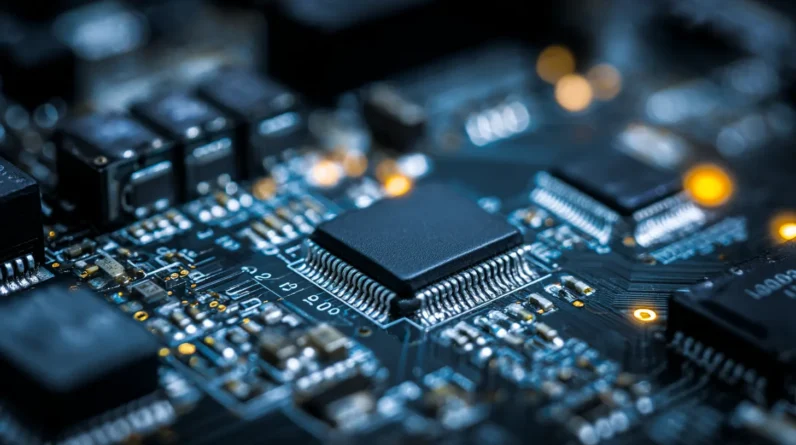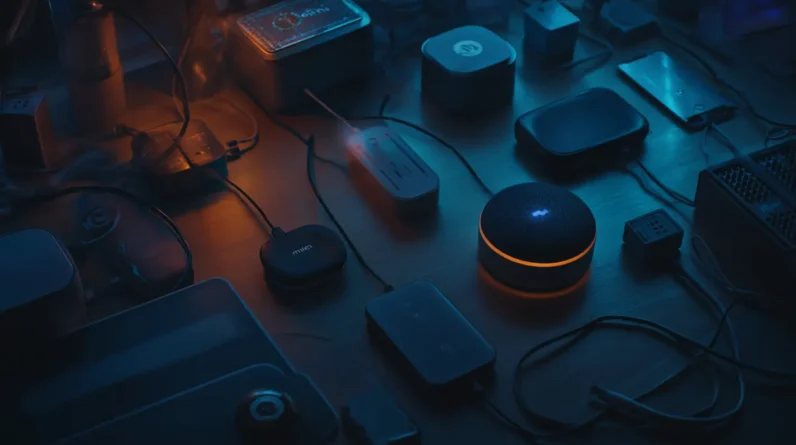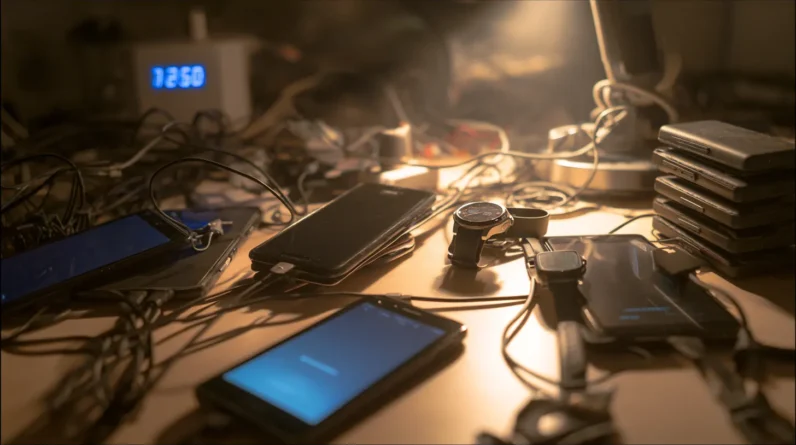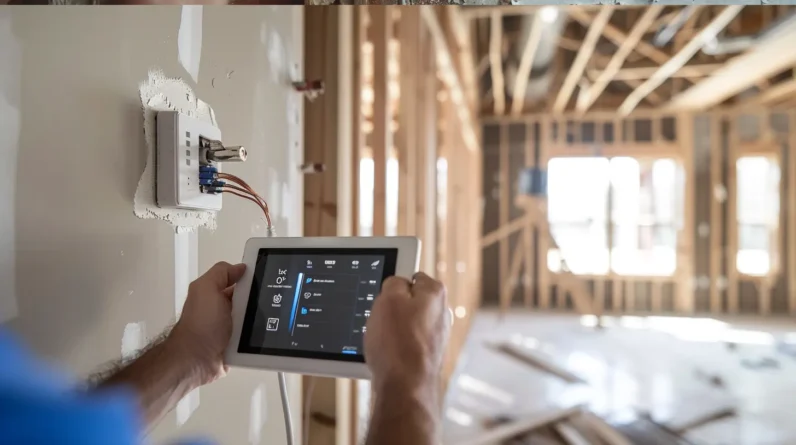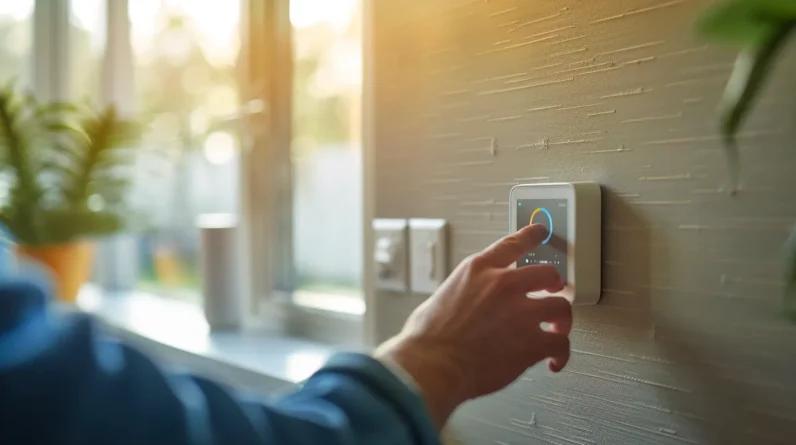
Did you know that the average American household owns approximately 25 electronic devices? With the increasing prevalence of smart gadgets, it is crucial to consider their impact on energy consumption and the environment.
In this comprehensive guide, we will explore the concept of energy efficiency in smart gadgets, providing valuable insights and practical tips for choosing energy-efficient devices, optimizing power settings, integrating smart home systems, and extending battery life.
Join us on this green tech journey towards a more sustainable future.
Key Takeaways
– Energy efficiency certifications like ENERGY STAR and EPEAT ensure products meet specific energy consumption criteria and demonstrate a commitment to producing environmentally responsible devices.
– Choosing energy-efficient smart gadgets, such as those with Energy Star certification, can save money on energy bills and contribute to a greener future.
– Optimizing power settings by enabling power-saving features like sleep mode, adjusting brightness settings, and minimizing standby power can maximize energy efficiency.
– Smart home integration allows for monitoring and control of energy usage, scheduling appliances for energy-efficient usage, and optimizing energy usage among devices, contributing to energy savings and a greener future.
Understanding Energy Efficiency Standards
Understanding energy efficiency standards is crucial for smart gadget manufacturers to consistently produce products that meet the highest environmental standards. In today’s world, where sustainability is a growing concern, consumers are increasingly demanding products that are energy-efficient and environmentally friendly. This has led to the development of energy efficiency certifications and the importance of energy monitoring in the manufacturing process.
Energy efficiency certifications, such as ENERGY STAR and EPEAT, play a significant role in ensuring that smart gadgets meet specific energy consumption criteria. These certifications require manufacturers to comply with strict guidelines and undergo rigorous testing to measure the energy efficiency of their products. By obtaining these certifications, manufacturers can demonstrate their commitment to producing environmentally responsible devices.
Energy monitoring is another crucial aspect of understanding energy efficiency standards. By monitoring energy consumption during the manufacturing process, manufacturers can identify areas where energy is being wasted or inefficiently used. This allows them to make necessary adjustments and improvements to reduce energy consumption and minimize their environmental impact.
Choosing Energy-Efficient Smart Gadgets
When selecting energy-efficient smart gadgets, it is important to consider their power consumption and environmental impact. Smart gadget sustainability is a crucial factor in reducing energy consumption and minimizing the carbon footprint.
Here are some key points to keep in mind when choosing energy-efficient smart gadgets:
Energy Star Certification: Look for smart gadgets that are Energy Star certified. These devices meet strict energy efficiency standards set by the Environmental Protection Agency (EPA) and can significantly reduce energy consumption.
Power-saving features: Opt for smart gadgets that come with power-saving features such as sleep mode or automatic shut-off. These features help minimize power usage when the device is not in use, further reducing energy consumption.
E-waste management: Consider the long-term environmental impact of the smart gadget. Look for devices that are designed with recyclable materials and have options for responsible disposal at the end of their lifecycle.
By considering these factors, you can make informed choices that contribute to a greener and more sustainable future.
Selecting energy-efficient smart gadgets not only helps reduce the environmental impact but also saves money on energy bills. Make a conscious effort to prioritize energy efficiency when purchasing smart gadgets and contribute to a more sustainable world.
Optimizing Power Settings for Maximum Efficiency
To achieve maximum efficiency, it is essential to optimize the power settings of your smart gadgets. Power saving techniques play a vital role in reducing the energy consumption of these devices, ultimately contributing to a greener and more sustainable future.
One of the most effective ways to optimize power settings is by reducing standby power.
Standby power, also known as vampire power, is the energy consumed by electronic devices when they are not in use but still plugged into an electrical outlet. This can account for a significant portion of the overall energy consumption of your gadgets.
To minimize standby power, you can enable power-saving features such as sleep mode or hibernate mode on your smart gadgets. These settings allow the device to enter a low-power state when it is not actively being used, reducing unnecessary energy consumption.
Adjusting the brightness settings of your gadgets’ displays can also contribute to power optimization. Lowering the brightness level not only saves energy but also extends the battery life of portable devices.
Smart Home Integration for Energy Savings
Smart home integration plays a crucial role in achieving energy savings by seamlessly connecting and controlling various smart gadgets and appliances. By implementing smart home automation, homeowners can significantly reduce their energy consumption and contribute to a greener future.
Here are three key benefits of smart home integration for energy savings:
Enhanced energy management: Smart home automation systems allow users to monitor and control energy usage in real-time. This enables homeowners to identify energy-draining devices and adjust their settings accordingly, resulting in reduced energy waste.
Optimized scheduling: With smart home integration, users can schedule appliances and gadgets to operate at specific times. This enables energy-efficient usage by avoiding unnecessary power consumption during periods of low demand or when no one is at home.
Seamless device coordination: Smart home automation systems enable different devices to communicate and coordinate with each other. For example, when a smart thermostat detects that no one is at home, it can automatically adjust the temperature to save energy. Similarly, smart lighting systems can be programmed to turn off when a room is unoccupied.
Tips for Extending Battery Life in Smart Devices
One effective strategy for maximizing the battery life of smart devices is by implementing efficient power management techniques. By employing battery saving techniques and managing background apps, users can extend the life of their device’s battery and reduce the need for frequent charging.
One of the most important battery saving techniques is to adjust the screen brightness. Lowering the screen brightness can significantly reduce power consumption and extend battery life. Additionally, enabling the auto-brightness feature allows the device to adjust the screen brightness based on ambient light conditions, further optimizing power usage.
Managing background apps is another crucial aspect of battery life optimization. Many apps continue running in the background even when not actively being used. These apps consume valuable battery power, so it is important to close unused apps or restrict background app refresh for non-essential apps.
Another effective strategy is to disable unnecessary features and connectivity options when not in use. Features like Wi-Fi, Bluetooth, and location services consume considerable battery power. Turning off these features when not needed can help conserve battery life.
Frequently Asked Questions (FAQs)
What Are the Current Energy Efficiency Standards for Smart Gadgets?
The current energy efficiency standards for smart gadgets include energy efficiency ratings and energy consumption comparisons. These standards help consumers make informed choices and promote the development of more energy-efficient devices.
How Can I Determine the Energy Efficiency of a Specific Smart Gadget Before Purchasing It?
Determining the energy efficiency of a specific smart gadget before purchasing it requires careful consideration of various factors. By examining the device’s energy labels, reading reviews, and comparing specifications, consumers can make informed choices.
Are There Any Specific Power Settings I Should Adjust on My Smart Gadget to Optimize Energy Efficiency?
To optimize energy efficiency on smart gadgets, users should consider adjusting power settings such as enabling power saving modes and reducing screen brightness. These adjustments can contribute to reducing energy consumption and prolonging battery life.
How Can I Integrate My Smart Gadgets Into a Smart Home System to Maximize Energy Savings?
Integrating smart gadgets with renewable energy sources and implementing smart home automation can significantly enhance energy efficiency. By optimizing energy consumption and leveraging renewable power, homeowners can maximize energy savings and reduce their carbon footprint.
What Are Some Additional Tips for Extending the Battery Life of My Smart Devices?
To extend the battery life of smart devices, maximizing battery life and reducing standby power consumption are crucial. Implementing power-saving features, optimizing settings, and minimizing unnecessary background processes can significantly improve battery performance.
Conclusion
Energy efficiency in smart gadgets is crucial for reducing environmental impact and conserving energy.
One interesting statistic to highlight is that by choosing energy-efficient smart gadgets, households can save up to 50% on their energy consumption, leading to significant cost savings and a greener lifestyle.
By understanding energy efficiency standards, optimizing power settings, and integrating smart home technologies, individuals can contribute to a more sustainable future while still enjoying the benefits of smart devices.


